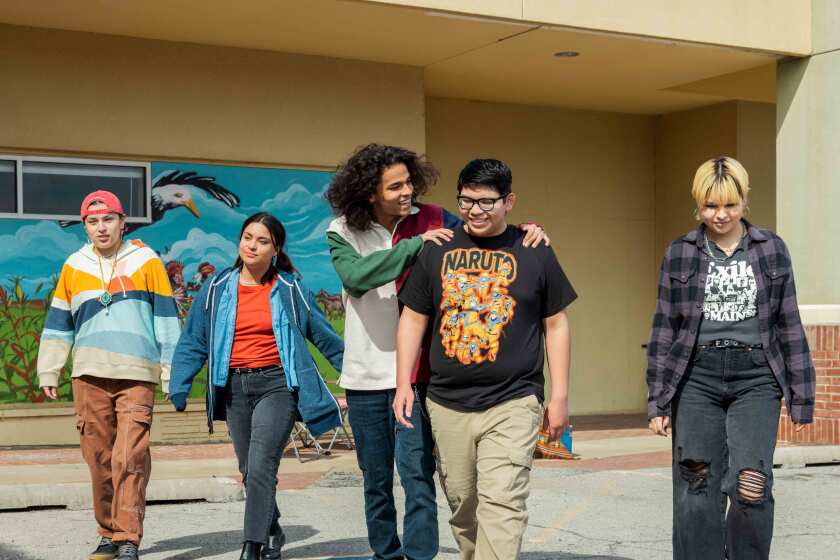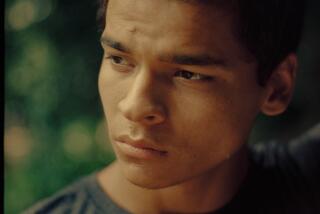From Native American surf rock to the Rolling Stones: How âReservation Dogsâ got its DIY sound
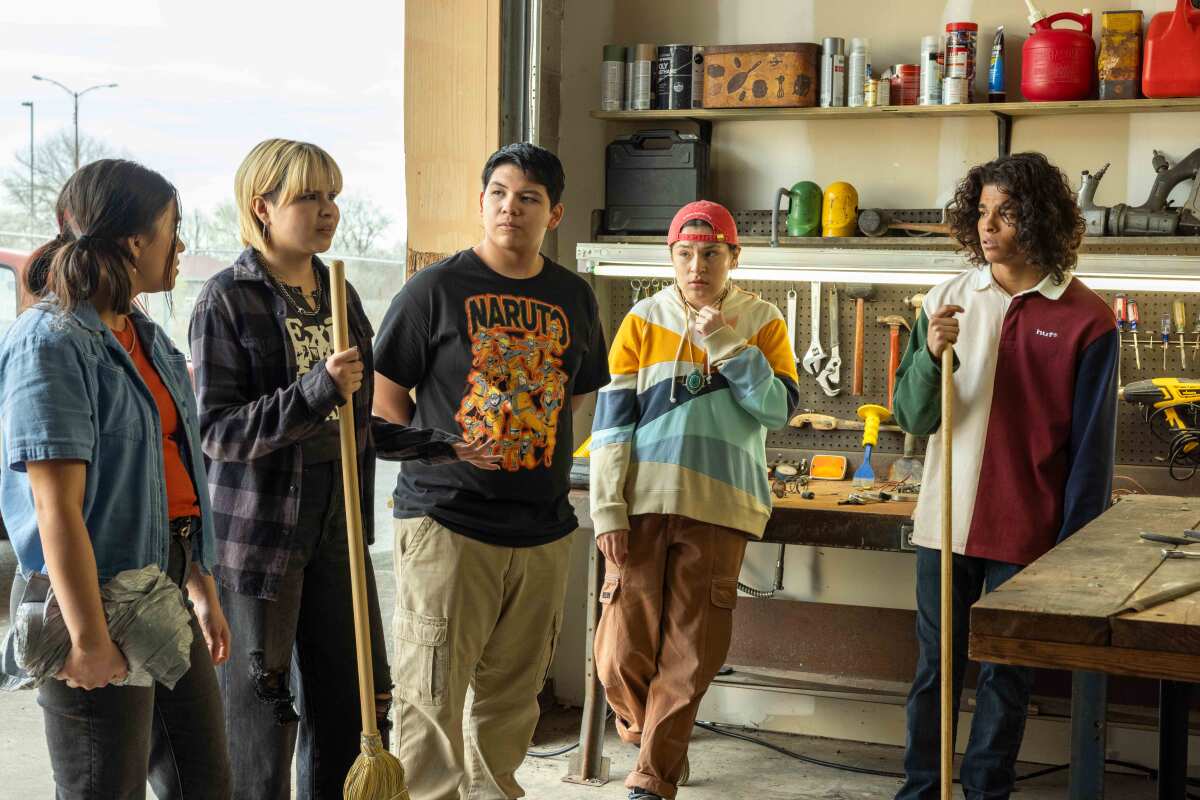
Tiffany Anders began picking songs for movies at age 15, when she advised her mom, filmmaker Allison Anders, to use a track by indie rockers Dinosaur Jr. on her 1992 breakout feature, âGas Food Lodging.â Young Anders then pursued a career as a singer-songwriter, and after releasing an album produced by British provocateur PJ Harvey, she officially segued into music supervision for TV and film. More recently, she has emerged as a go-to song picker for edgy TV comedies, including âPEN15,â âYouâre the Worstâ and âBeef.â But until a couple years ago, Anders had never curated needle drops for a Native American story.
Then came âReservation Dogs.â
The critically acclaimed FX on Hulu dramedy follows four teenage misfits in rural Oklahoma as they struggle, often hilariously, to reckon with the untimely death of their friend, their heritage and navigate uncertain futures. Co-creator and showrunner Sterlin Harjo enlisted Anders shortly after seeing her post about the Native American documentary âRumbleâ on Instagram. âHe messaged me, and we started talking,â she recalls. âSterlin said, âIâve got this show coming up, and Iâd love you to be a part of it.â So thatâs where it started.â
Longtime indie filmmakers Danis Goulet and Blackhorse Lowe discuss their work on âReservation Dogsâ and how the series bolstered Native American representation onscreen and behind the camera.
The first season of âReservation Dogsâ kicked off in 2021 with a teen heist underscored by the Stoogesâ raucous punk anthem âI Wanna Be Your Dog,â followed in later episodes with numbers by hip-hop grand masters Wu-Tang Clan, country singer Sturgill Simpson and everything in between. The common thread? âSterlinâs first point of direction to me was, âEverything has got to sound DIY,ââ says Anders. âI immediately knew what he meant: The music had to have heart and soul, it had to be honest, it had to be full of integrity. It can be huge, it can be old, it can be new, as long as it carried that kind of feel.â
For the third and final season of âReservation Dogsâ (it concludes Sept. 27), Anders licensed music from gifted but often obscure artists whose songs sound as if they were purpose-built for the scene at hand. Speaking from her Altadena home, Anders de-constructed Season 3âs music cues, reflecting her fondness for âloner folk dudes,â Native American surf rock and hippie-era psychedelia. This interview has been edited and condensed for clarity.
This showâs packed with songs that most people probably havenât heard before. In Episode 2 [of Season 3], for example, Bear (DâPharaoh Woon-A-Tai) wanders the barren Oklahoma plains, where he meets a reclusive old man named Maximus. At the end of his journey, Bearâs all alone, staring into space as this melancholy ballad plays. Whatâs the tune?
Thatâs âEarly Blueâ by F.J. McMahon. In my 20s, I lived in New York and got kind of obsessed with confessional, introspective records made by what I call loner folk dudes. This used record store loaned me a bootleg copy of his album âSpirit of the Lonely Juice,â which had âEarly Blueâ on it. I just thought the song fit the DIY vibe, for one. And two, it has this isolated, self-reflective quality that fits Bearâs moment of being on his own. Heâs the lost loner guy there.
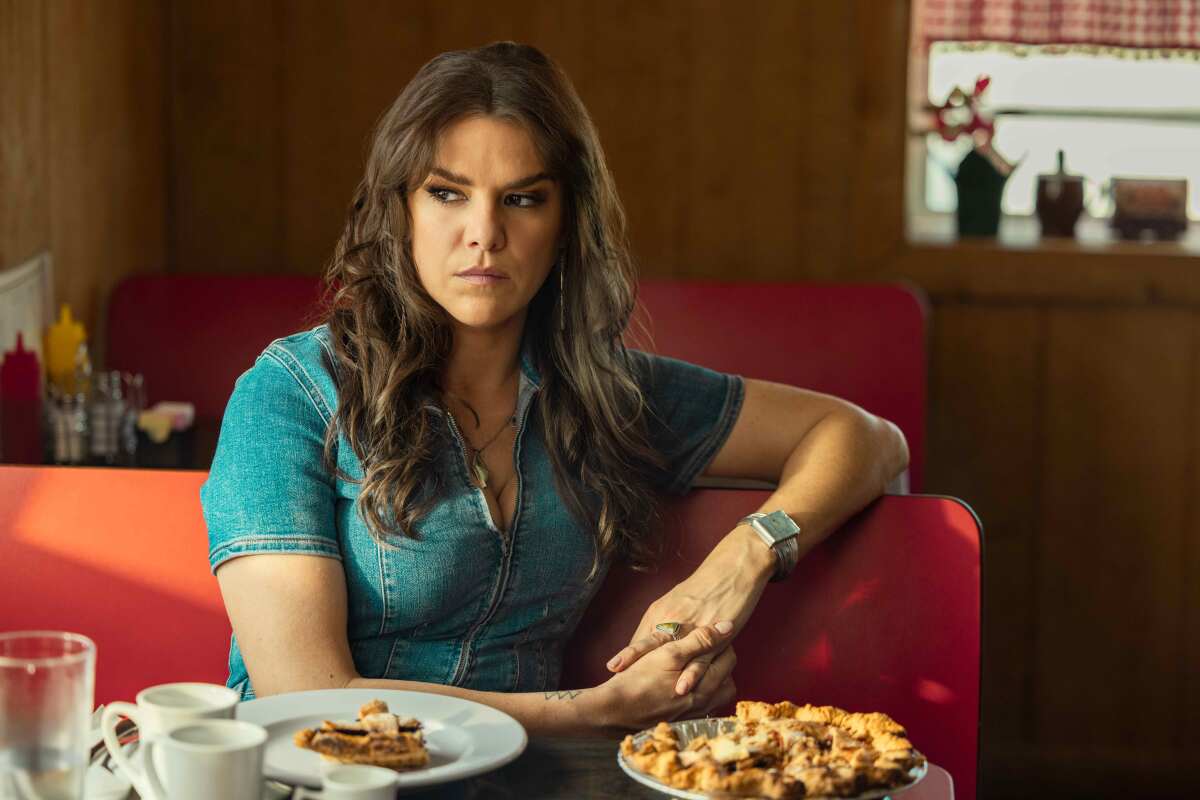
Episode 3 centers on Deer Lady [Kaniehtiio Horn], and it flashes back to her days at the type of nightmarish boarding school that most Native American kids were forced to attend. You feature three pieces of moody music by Mali Obomsawin to express Deer Ladyâs inner world. How did you learn about this artist?
Sterlin told me about Mali before they started shooting this season, and I was blown away. Her music is experimental, and itâs got these jazzy elements but itâs also heartfelt. Not to sound all witchy lady, but I feel like Maliâs music and [composer] Matoâs [Wayuhi] score were made to be together, but it just happened by chance.
Maliâs a Native American, right?
Yes. Sterlin went into this season very keen on using a lot of current Native American musicians.
Which brings us to a soulful track in Episode 4 by the late Native American musician Jesse Ed Davis. He was known for his guitar playing with artists like Bob Dylan and John Lennon, but here heâs singing, âI was born on the banks of the Washita River.â
One of the bonding moments for me and Sterlin is that we both love Jesse Ed Davis. We had to use him, and âWashita Love Childâ was perfect for this scene. Our editor Varun Viswanath kept asking for old rock songs to kind of emulate these four characters being âthe reservoir dogs,â and I was like, âJesse Davis is our dog.â The songâs sweet, it has a groove and I really like that Jesseâs telling a story about his culture.
The âDazed and Confusedâ homage in Episode 6 happens back in 1976 when the rez dog elders were just teenagers acting wild on the last day of school. Itâs packed with rock tracks from that period, which must have been fun to organize.
For me, the sweet spot for rock is the â70s, and when you dig into obscure stuff, it gets even funner and cooler. Iâm one of those who can go down the [rabbit] hole forever.
From that rabbit hole, you pulled a trippy song by the short-lived Texas hippie band 13th Floor Elevators called âYouâre Gonna Miss Me,â which plays while the teenagers feel LSD kicking in.
I mentioned âYouâre Gonna Miss Meâ for opening Season 2. We went with [Native American band] Black Belt Eagle Scout instead but we kept the song in our back pocket. Texas is close enough to Oklahoma [laughing], and the track has this Southern psychedelic rock thing â it just made sense.
Young Maximus later encounters a UFO to the tune of a spooky instrumental [âYeti Talk to Yogiâ] by 70s-era avant-garde German band Amon Dßßl. Why that group?
That moment had to feel other-worldly. When I first went through the script and saw the scene where he sees the UFO, I thought this would be the perfect place to get in some spacey Krautrock, so I immediately went to Amon Dßßl.
In Episode 6, resident nerd Cheese [Lane Factor] goes fishing in the woods with his uncles. When things get emotional, we hear this oddly uplifting song by a guy named Larry Norman. How did you find âI Wish Weâd All Been Readyâ?
That track came from Sterlinâs daughter, Portlyn. While we were spotting the episode, going through each scene and talking about what music we wanted, Sterlin showed us a video from a Christian movie of these women singing that song. Heâs like, âMy daughter turned me onto this weird Christian rock guy from the â70s,â and I went, âOh, my God. Letâs fit this into the Cheese episode.â It was perfect because in a way the song sounds very âafter-school special.â
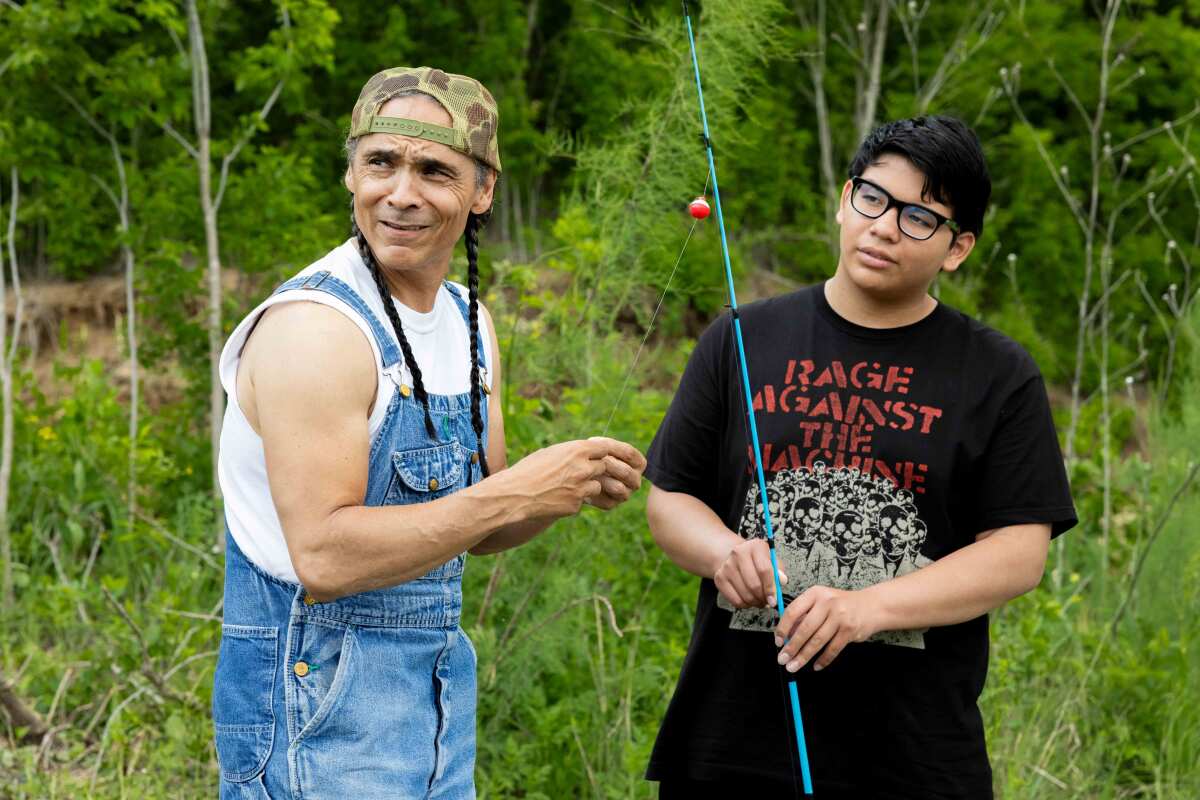
In music supervising âReservation Dogs,â you evaluate each songâs emotional impact, but at the same time, youâre getting editor feedback, you might have licensing issues, you need to make sure the cue supports the scene. Itâs a lot.
It is a lot. Youâre constantly balancing the budget without wanting to lose the integrity of what the showâs trying to do. [You ask yourself,] âWill this song work instead? Itâs cheaper.â If we could use a gazillion Johnny Cash songs or whatever, weâd do that, but I donât think it would be as interesting.
They say constraints inspire creativity.
Exactly, and I think itâs wonderful because then you can expose viewers to new things and spotlight all these Native American artists too, so that people go, âWhat is that song?â
Looking back over the first two seasons of âRez Dogs,â what musical moments stand out for you?
One of my favorites happened in Season 1, where we use a Lee Hazlewood song [1971âs âIf Itâs Monday Morningâ] when Cheese makes the connection with âGrandma,â whoâs not really his grandma. Theyâre sitting out there, and she canât see, and, you know, she continues to be his grandma through the seasons. I loved that. And I also think of âCome and Get Your Loveâ at the end of Season 1, with the footage of Redbone playing over the credits.
What can you tell us about music for the showâs final episodes?
For [Episode] 309, we used a Native artist, Ken Pomeroy, whoâs a Sterlin find. In 308, we have an amazing experimental Native American artist, Raven Chacon. He made this kind of surf record and sent a song to me. We put it at the end of Episode 8, and then I called Raven and said, âDo you have any more of that surf stuff, because itâs working really well in this episode.â

Youâve also included the Rolling Stones new single âAngry,â which is a huge get, in Episode 8. How did that happen?
Dasmarie Alvino at Universal Music Group mentioned that they had a new Rolling Stones album coming out. I thanked her and said I was very excited to hear the album as I am a lifelong fan. She then sent me a link. I listened to it day in and out when I was in London over the summer. I let Dasmarie know how into the album I was. She got back to me a few days later and said that the Rolling Stones would love to be considered for âReservation Dogs,â citing the cultural impact and relevance the show has, which blew my mind and Sterlinâs as well! I remember texting him, and I believe his text response was âWHAAAAAA?â
Unlike most of the artists featured in this series, the Rolling Stones are pretty well known, to put it mildly.
The Stones, while massive, still fit the salt of the earth sound of the show, and this album reflects a lot of that mid- to late â70s gritty rock sound they created. We luckily had this one episode left to complete where we knew the song would work. And it did. We both are still sort of in disbelief that we got a Stones song in the show.
âReservation Dogsâ has attracted a lot of fans for the way it portrays Native American life today. Any final thoughts as the series winds down?
Iâm extremely heartbroken that the showâs gonna be over. Iâve learned so many things about modern-day Native American culture and music and everything else. I mean, I would have loved to keep going, because itâs been a dream job.
More to Read
The complete guide to home viewing
Get Screen Gab for everything about the TV shows and streaming movies everyoneâs talking about.
You may occasionally receive promotional content from the Los Angeles Times.
